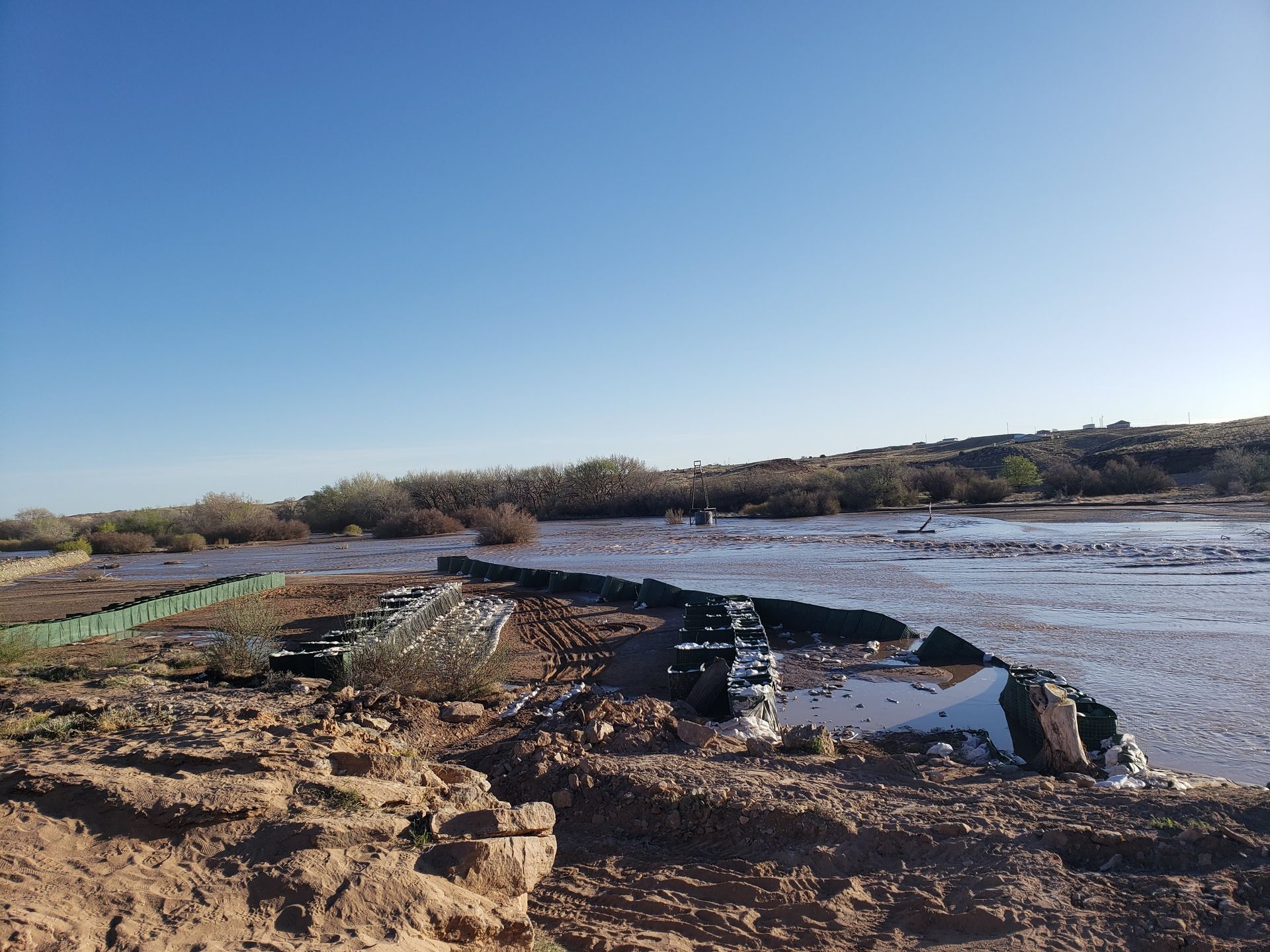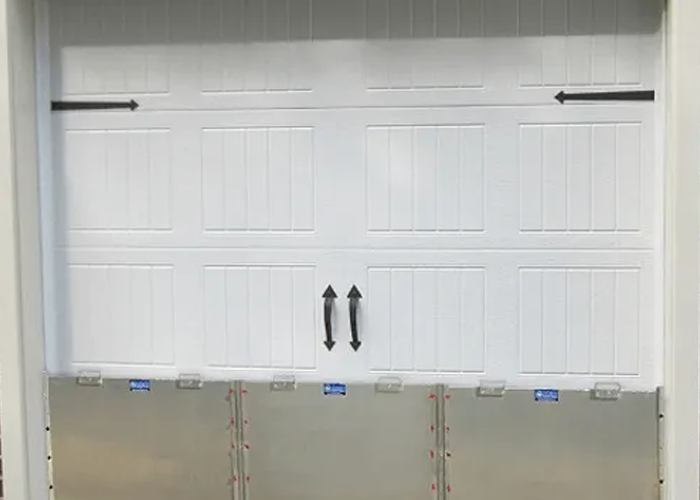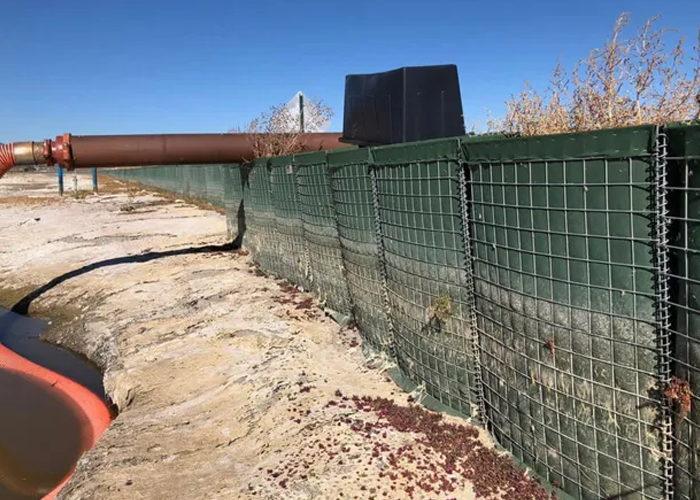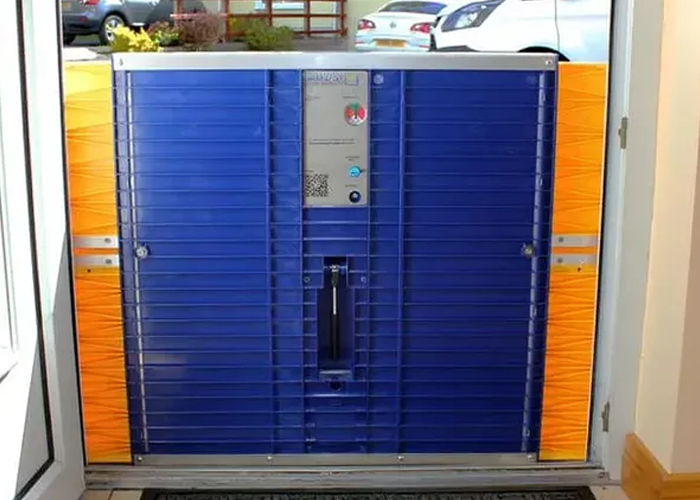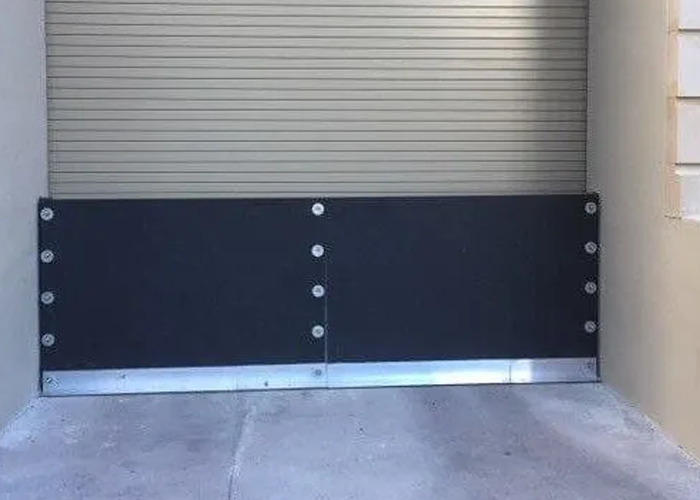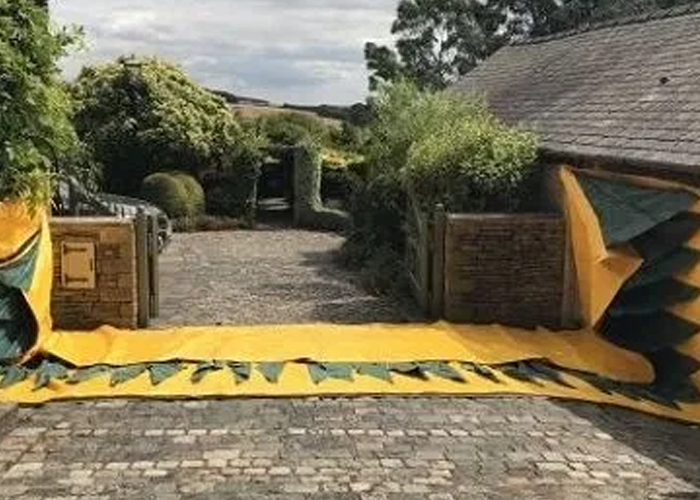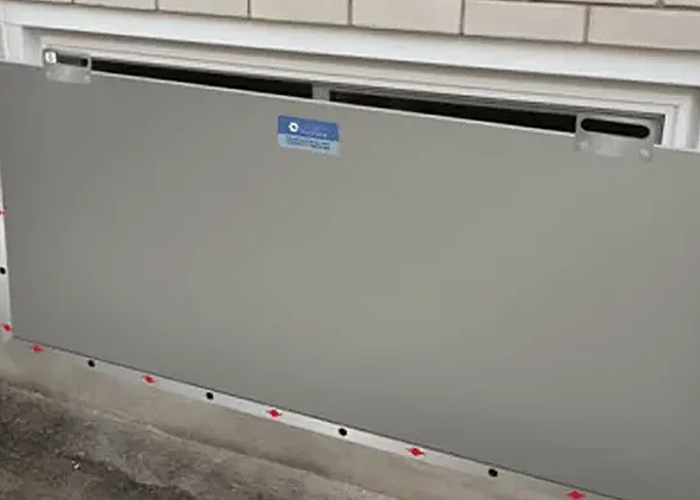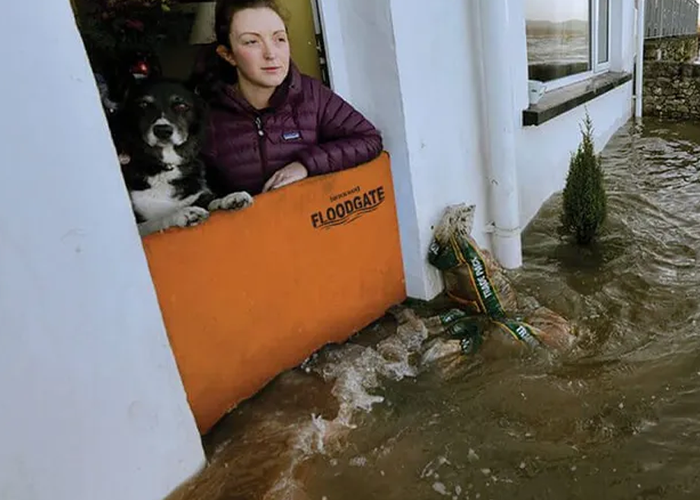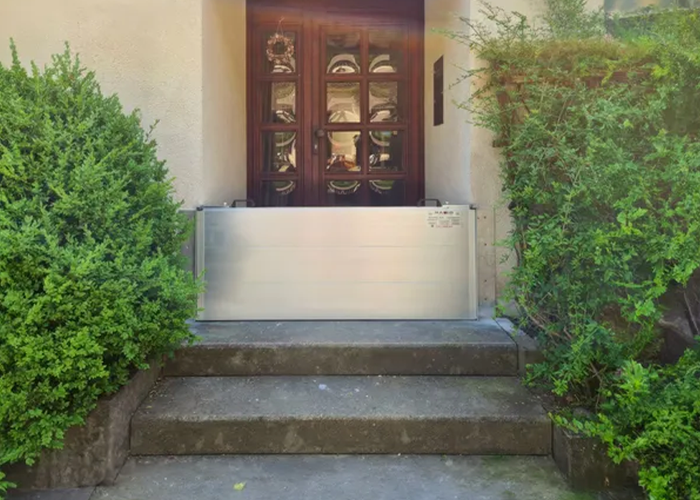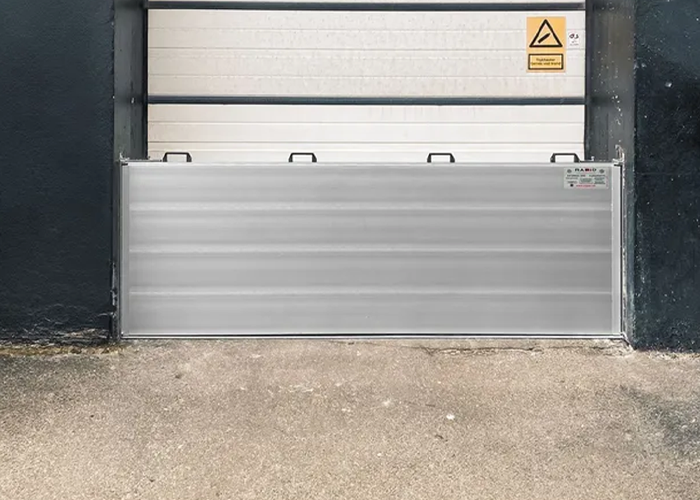Flood Defense Group uses a variety of flood barriers to stop catastrophic flooding in Chinle, Arizona
SITUATION
In support of the US federal response to flooding, the USACE National Flood Fight Center out of Rock Island, IL called upon Flood Defense Group to redeploy to Chinle, AZ to assist with repairing sections of their earthen levee by using the HESCO flood barrier. During this visit, their earthen levee failed, and our mission changed from attempting to plug holes in a levee to redirecting the primary channel of the local river/wash toward an alternate area within the riverbed and stop floodwater that was actively flooding the community of Chinle, AZ.
Primary Problem – Immediate Scouring
Scouring is when moving water washes away (or erodes) the existing soil, sand, or rock as it passes by. You can see in the picture above how the earthen levee is eroding. This is happening because soil below the level of the water is eating away, or ‘scouring’, the earth below the water and causing berm to fall into the water where it is washed downstream.
This was a large riverbed with a deep layer of loose sand and anything we put into the rushing water immediately suffered from scouring/erosion of the sand below it. It was similar to the way sand washes away from under your feet when you are standing in the waves at a sandy beach.
The full resources of the USACE were being brought to bear which included some heavy machinery that was trying to create a levee with surrounding sand and rock that was available. The problem was that the river would erode away the fill material about as fast as it could be placed in the river. After 3 days with 2 front-end loaders, 2 backhoes, a bulldozer, and 3 skid steers, they were still unable to divert the water and the town of Chinle, Airzona continued to fill with water.
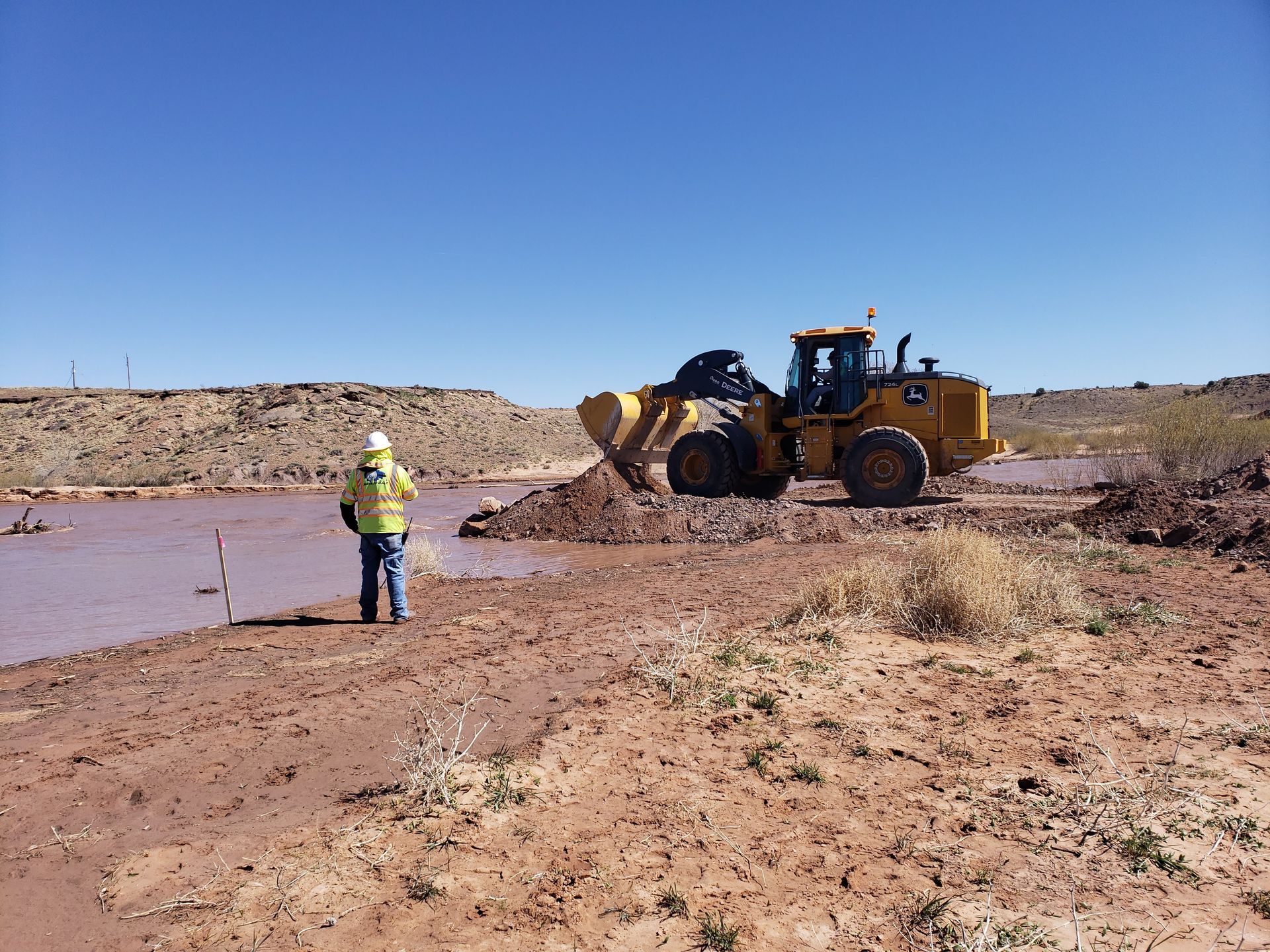
Learning through trial and error: Attempt #1 – Unlined HESCO with Sandbags Inside

We had HESCO flood barriers available but we knew the power of the river against the product would immediately want to push it downstream before we had a chance to fill it. To solve this problem, we decided to remove the fabric from within the individual cells so water could pass through the barrier while we filled it with sandbags. If we were building the HESCO on some sort of river rock base, we may have been more successful. Unfortunately, the problem remained that it would be sitting on highly erosive sand and under scouring was immediate and constant.
RESULT
It was initially promising but as we worked our way into the floodwater, the sand around the base of product was quickly lost to scouring. This was causing the product to lean as the sand it was sitting on was washed away.
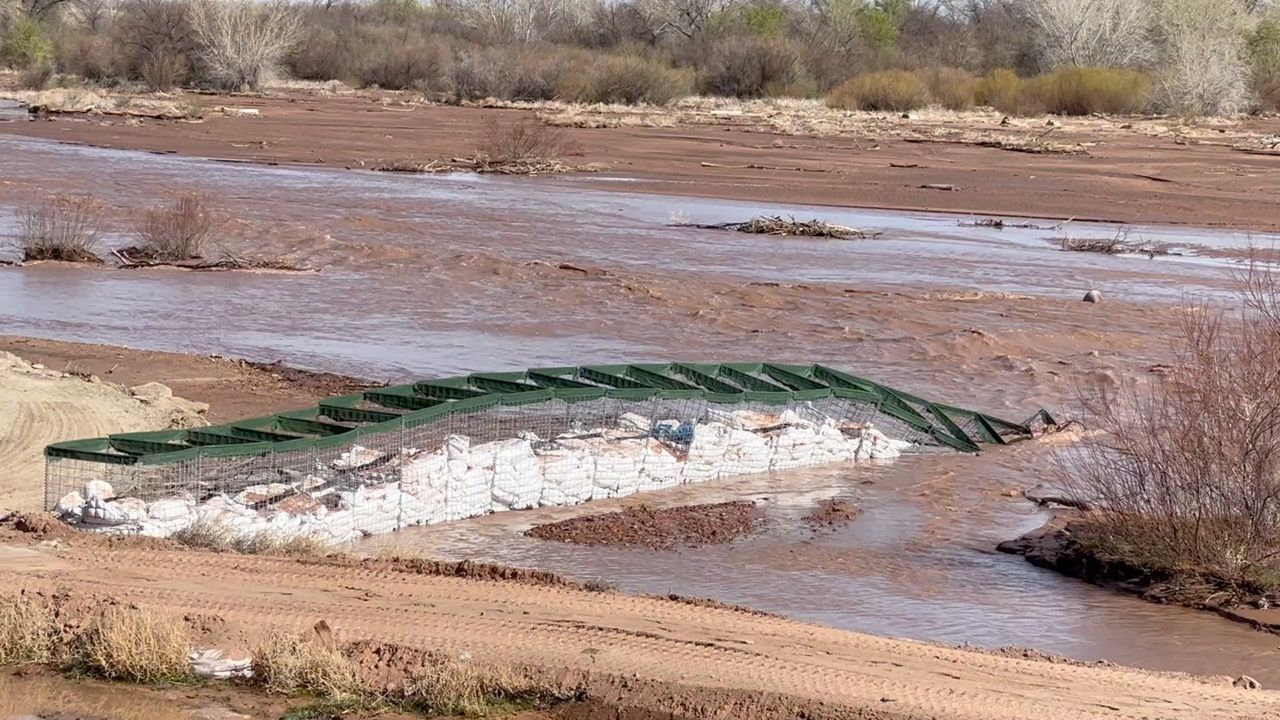
LEARNING POINTS
- We could have created some buttress cells within the line of HESCO (seen below) to reinforce it and/or keep it from falling over as sand scoured away from below the barrier
- A plastic liner over the barrier and laying on the river bottom in front of it would help mitigate against scouring but in this case, the plastic liner skirt would need to be done simultaneously with filling the HESCO with enough sandbags to stop/redirect the water which would have been extremely challenging
- NOTE: When building a traditional soil filled HESCO flood barrier in an area where scouring could be a big problem, we like to take the additional step of placing about 2 layers of sandbags within the bottom of the HESCO itself to mitigate against under scouring from sucking out all fill material when confronted with under scouring.
Attempt 2 – NOAQ Boxwall in long sections
We needed a solution to redirect the water while also attempting to deal with the immediate effects of scouring that was taking place.
To do this, Flood Defense Group was able to independently mobilize the NOAQ Boxwall product to the Chinle Chapter of the Navajo Nation because of how it immediately redirects water without the requirement of fill material. We knew we would be fighting the immediate effects of scouring and we wanted to deploy large sections of the NOAQ Boxwall as quickly as possible and cover it with a liner to prevent scouring. This solution arrived in the back of a pick-up truck and was hand carried into place!
City skyline
RESULT
The NOAQ Boxwall comes in pieces that are each 3’ long. In this case, we wanted to link together 45’ long sections of this product and cover it with plastic in an attempt to fight the immediate scouring that would take place. However, this product is not designed to be carried in 45’ sections that were pre-joined and some of the joins where coming disconnected while we carried it into place.
LEARNING POINTS
- If we want to deploy more than about 3 or 4 units of the NOAQ Boxwall flood barrier all at once, additional steps should be taken to ensure they stay connected.
- In the next attempt, we simply screwed 12’ long boards to them that were overlapped so we could carry long sections.
(This was done outside of manufacturers suggested operating procedures and naturally negated any product warranties.
- Flood Defense Group loves the capability of cutting, screwing and modifying this product in a variety of ways which would naturally forego any manufacturer warranties but... the ability to cut/modify this product proves extremely useful, simple, and super effective.)
Attempt 3 – NOAQ Bnoxwall in Long Sections Screwed to Wood – Winning!!
It was extremely important that we could quickly install long sections of the NOAQ Boxwall. This was because every time a section was installed, all the water was being redirected toward the leading edge of our flood barrier. Therefore, after each section, the water would become deeper, faster, more erosive, and even more challenging to work with.
To solve the problem of our units becoming disconnected while we carried them into place, we simply screwed the product to long pieces of wood below them such that we had multiple sections of about 30’ each. We could carry these into place in a single piece, place them into the water, and immediately cover them with a plastic liner to prevent water from scouring the sand from below them. This liner at the base of the barrier is commonly referred to as a ‘skirt’ or an ‘apron’ which is further illustrated below.
By deploying the NOAQ Boxwall to redirect the incoming floodwater, we were able to create a somewhat dry working space behind the barrier where we could build a longer-term defensive line using HESCO barriers.
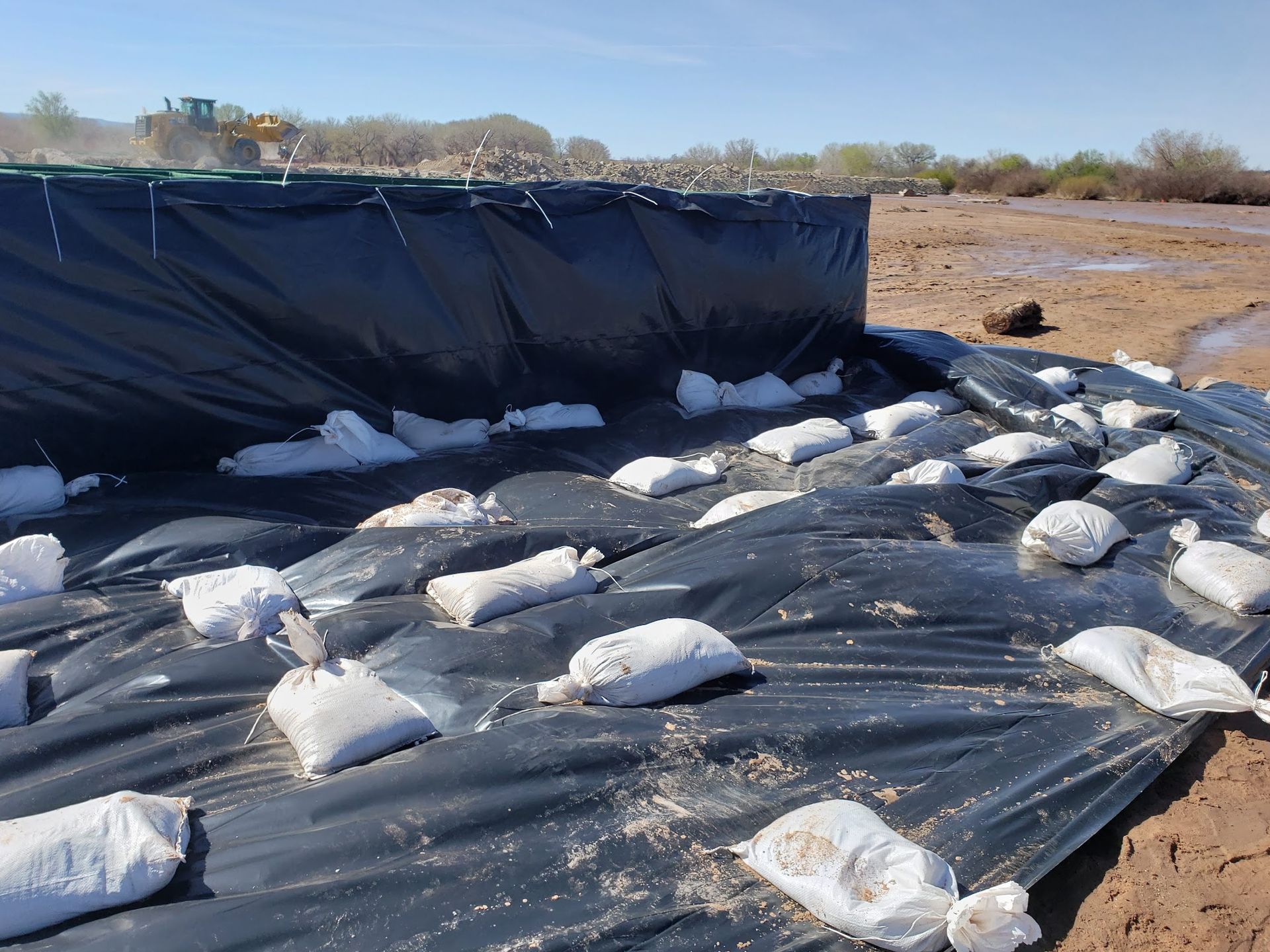
NOTE: For most working surfaces we encounter, we do not experience the same level of erosion and under scouring that we experienced in this situation. In this case, we were building on sand while fighting the rushing floodwater within a working environment that was hard to access. It was a challenge!
Attempt 3.5 – HESCO Flood Barrier Behind the NOAQ Boxwall
In an attempt to create a longer-term capability of redirecting the water, we were able to stretch out a line of HESCO, with buttress cells attached, in the dry space behind the NOAQ Boxwall. We covered the HESCO with plastic sheeting that was pulled out to also create a ‘skirt’ at the base of the HESCO which we then weighed down with sandbags.
RESULT
Water was able to push many of the sandbags off the skirt of the HESCO and under scouring was able to take hold.
City skyline
LEARNING POINTS
- Our initial line of HESCO did not have sandbags attached to the plastic liner skirt which were washed away and allowed scouring to take place.
- We knew scouring would be a problem and did not fill the HESCO past the water point in order to prevent them from getting top heavy if/when a lean caused by scouring began to occur.
- The buttress cells were crucial in holding the barrier in place as the ground scoured out below it.
- Even though this is not the result we were looking for, this initial HESCO line of defense continued to hold the water back with overtopping, did not fall over from the scouring, or experience material failure. This is a good example of testing a product to its limit and we were happy with how it held strong!
FINAL STEPS – CREATE ADDITIONAL LINES OF DEFENSE
Once we diverted the water and created a foothold within the riverbed that allowed us to bring in machinery, we were able to fortify our flood defenses and create additional layers of protection.
Additional Details
- It took about 2-3 hours for local Navajo volunteers to redirect the river with the NOAQ Boxwall by hand
- 2 front-end loaders, 2 backhoes, a bulldozer, and 3 skid steers were unable to redirect this river after 3 days of operation
- Approximately 1,000 linear feet of barrier redirected floodwaters past nearly 1.5 miles of vulnerable levee
SPECIAL THANKS
This is a special thanks to Heber City, Utah who had flood concerns of their own but lent their NOAQ Boxwall flood barriers to help out Chinle Chapter of the Navajo Nation during a time of urgent need. Heber City really stepped up to help!
NOTABLE MENTION
Thank you to the local Navajo volunteers who came out and worked such long hours without complaint. You were always positive, hardworking, resourceful, and never complained about ANYTHING! You ‘drove on’ to mission completion of stopping the floodwaters effecting your community and beyond in safeguarding your community! BAM! Go Navajo Nation!





